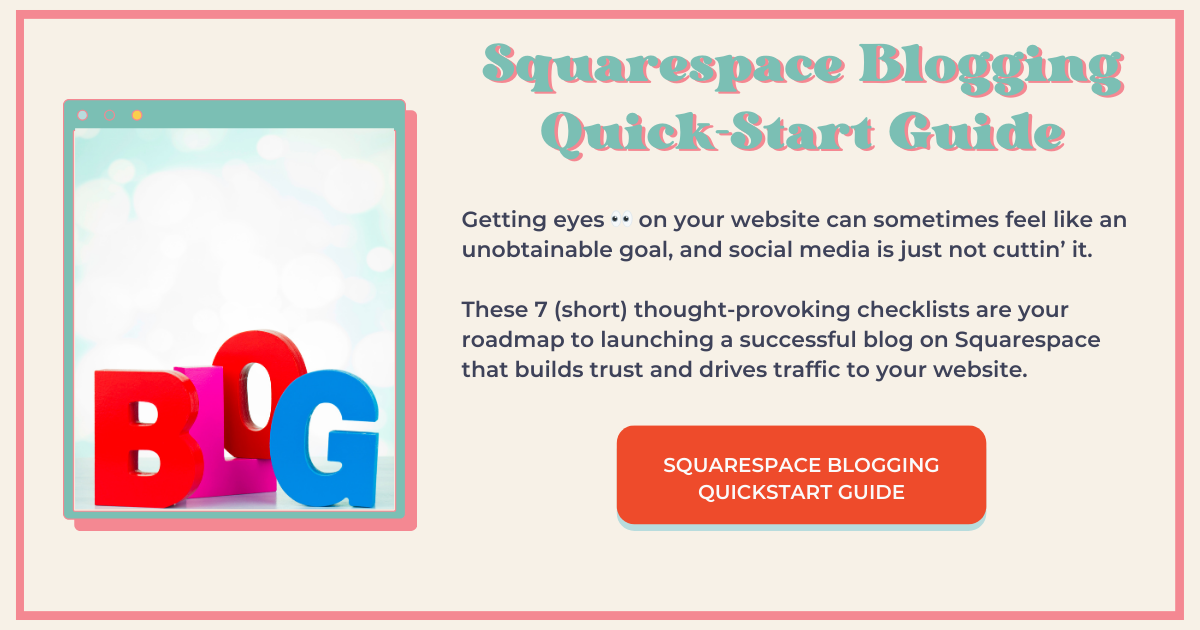5 Blog Strategies to Show Authority and Get More Website Traffic
Show Your Authority to Google
Showing up in Google searches means showing Google you have some street cred so its algorithm will put you on page 1.
The good news is that blogging is the best way to do that. By regularly blogging about the thing you’re an expert on you’re continually adding valuable content to your website keeping it fresh and updated while offering valuable content to your target audience.
But there’s more to demonstrating authority to Google than this.
In this post I share five strategies to help you build that essential trust and authority with Google and ensure your blog posts, and therefore your website, rise to the top in Google results.
1. Include an Author Bio in Every Blog Post
An Author Bio is not an ‘About’ page and cannot be accessed from your header navigation, rather, it’s a quick introduction that lets visitors know who’s behind the content they’re reading and why they should trust your insights.
When enabled in Squarespace, it appears at the end of the blog post. The content in the Author Bio is pulled from the bio you wrote in your Squarespace dashboard, so you have to do that first in order for this to work.
Go to your Dashboard > Profile and scroll down to the big box entitled “Bio.”
To learn how to create an effective Author Bio read my blog post Add an Author Bio to Your Squarespace Blog to Show Authority where I show you step by step how to do this, including tips on creating an Author Bio page you can link to from your bio and customizing the author bio that appears in your blog post by using custom CSS.
For an example of an Author Bio, scroll down to see mine.
2. Include External Links to Reputable Sources
When you link to well-established websites, you're not just backing up your claims with credible information, you’re also showing Google that your content is well-researched and reliable.
However, overdoing it with too many links can distract readers, cause them to leave your website, and may dilute the effectiveness of your content.
Include high-quality external links when referencing statistics, studies, expert opinions, or any other relevant adjunct content that you feel will enhance your blog post, not “one-up” it.
Keep in mind too that excessive linking could raise red flags for Google, making your content appear spammy and negatively impact your domain authority.
3. Consistent Content Creation
Consistency isn't just about frequency, it's about maintaining a steady stream of high-quality content. Whether it’s 2x a week or 1x a month. Regularly publishing valuable blog posts shows Google that your site is active, relevant, and a reliable source of information.
This consistency not only helps in keeping your audience engaged but also encourages search engines to crawl your site more frequently, which can lead to better rankings. It’s not just about posting frequently, though—it’s about ensuring that each piece of content aligns with your niche and adds real value to your readers.
Developing a content calendar like the one I created in Traffic Transformer can help you stay on track and avoid gaps in your posting schedule.
Moreover, don’t forget to revisit and update older posts to keep them current and relevant. By consistently delivering valuable content, you reinforce your authority in your field and build a more reliable, trusted blog that Google is more likely to rank highly.
4. Leverage YouTube Videos
Integrating YouTube videos into your blog posts is a highly effective way to enhance your authority with Google. Videos can make your content more engaging, provide additional value to your readers, and increase the time visitors spend on your site—factors that Google considers when ranking your content.
Since YouTube is owned by Google, embedding relevant videos into your blog posts can help curry favor with Google by staying within their ecosystem.
You can create your own videos to showcase your expertise, such as tutorials, product reviews, or industry insights, and then embed them directly into your blog posts to complement your written content.
Additionally, linking back to your blog from your YouTube channel helps drive more traffic to your website and boost your site’s visibility. By strategically using YouTube videos, you not only enrich your audience’s experience but also position yourself as an authoritative voice in your niche.
And remember, YouTube is also a search engine. Oftentimes people skip Google altogether and go directly to YouTube to find answers. Include links in your YouTube description to relevant affiliates, lead generators, and of course, to the blog post (and related blog posts).
The Traffic Transformer course shows you how to benefit from adding YouTube videos to your blog posts, even if you’re camera shy.
5. Guest Posting on High-Authority Sites
By contributing valuable content to well-regarded sites within your industry, you showcase your expertise to a broader audience while earning valuable backlinks to your own blog. These backlinks are crucial for SEO, as Google views them as endorsements of your content’s quality and relevance.
Target websites that are respected in your niche and have a strong domain authority. Ensure that the content you submit is top-notch, offering real value to the readers of the host site. This not only boosts your reputation but also strengthens your blog’s authority in Google’s eyes, potentially leading to higher search rankings.
In essence, guest posting is a win-win: you gain exposure and credibility, while also enhancing your blog’s SEO through authoritative backlinks.
Think of your referral partners and businesses that complement yours (and you also complement theirs). And be open to having your host be a guest blogger on your website as well.
Cultivating relationships with editors and other bloggers is a great way to build your network and open the door to more opportunities and increased credibility.
Final Thoughts
Establishing authority with Google is a critical part of any successful blogging strategy. By implementing these five strategies—crafting a strong author bio, linking to reputable sources, maintaining consistent content creation, leveraging YouTube, guest posting—you can enhance your blog's credibility, boost your SEO, and ultimately drive more traffic to your site.
Remember, authority isn’t built overnight, but with time, persistence, and the right tactics, your blog can become a trusted source in your niche.
Keep going!
Speaking of Linking to Relevant Sources, here’s a great post by SEOSpace about link building and why it matters..
This page contains affiliate links
Like this post?













